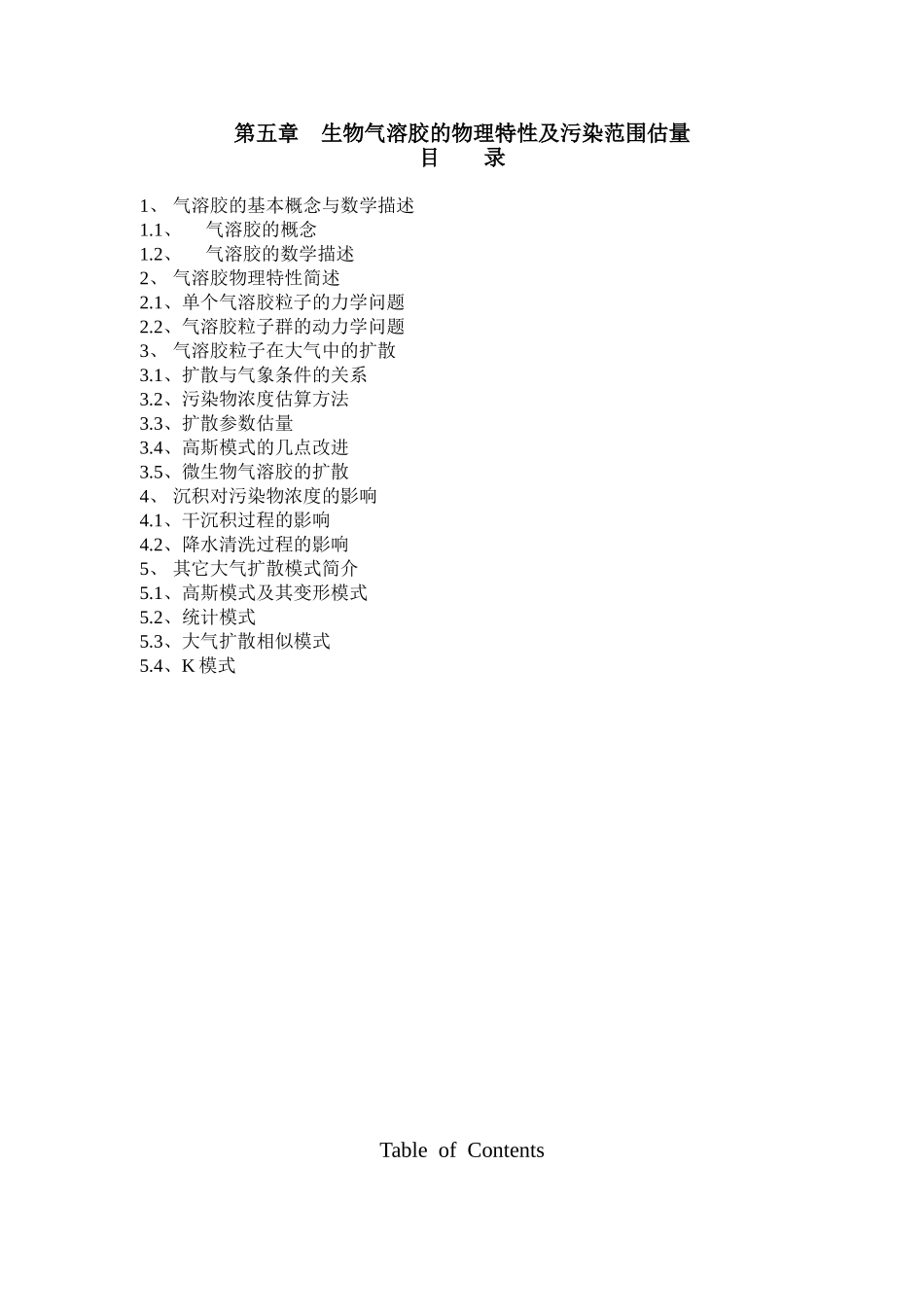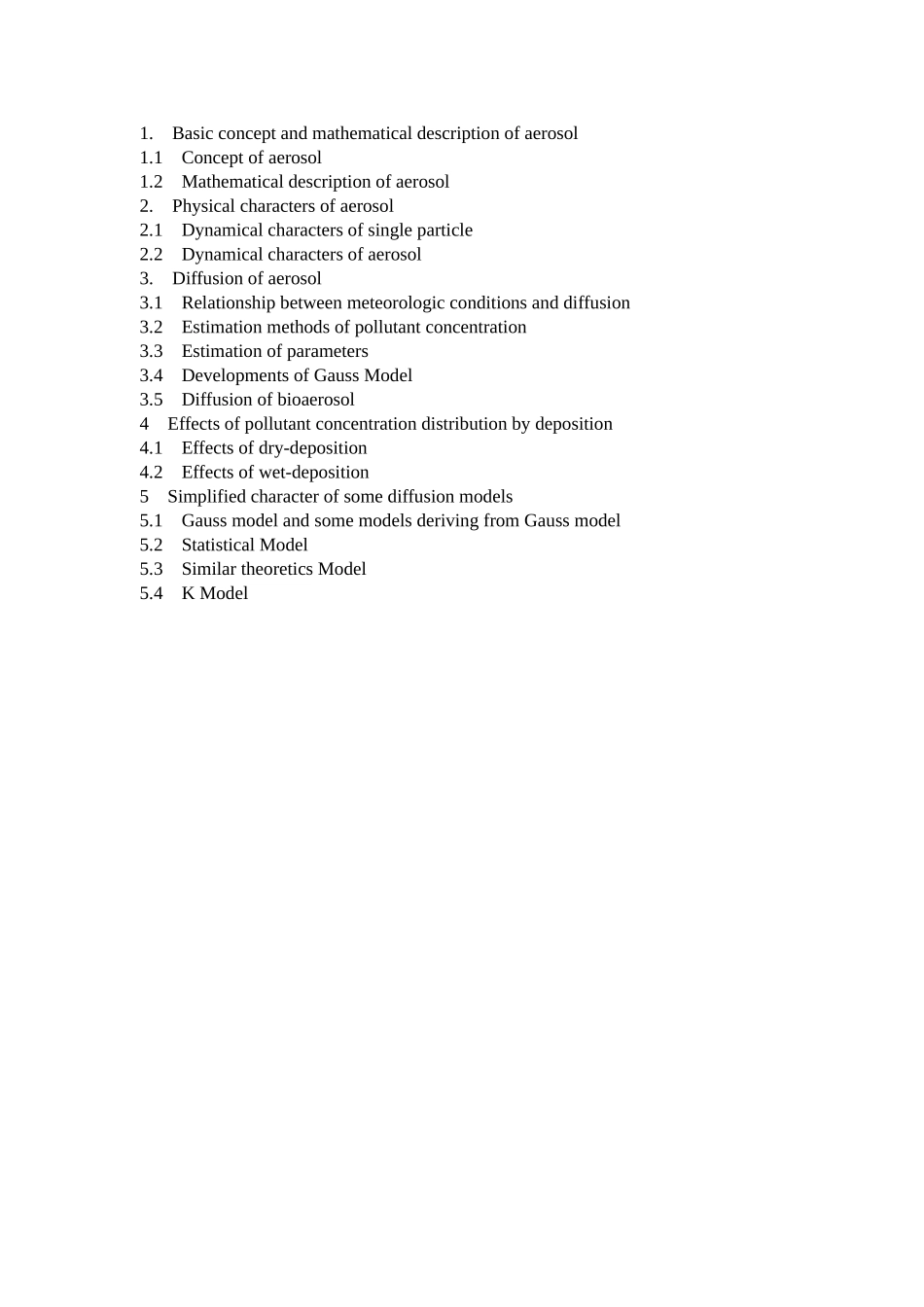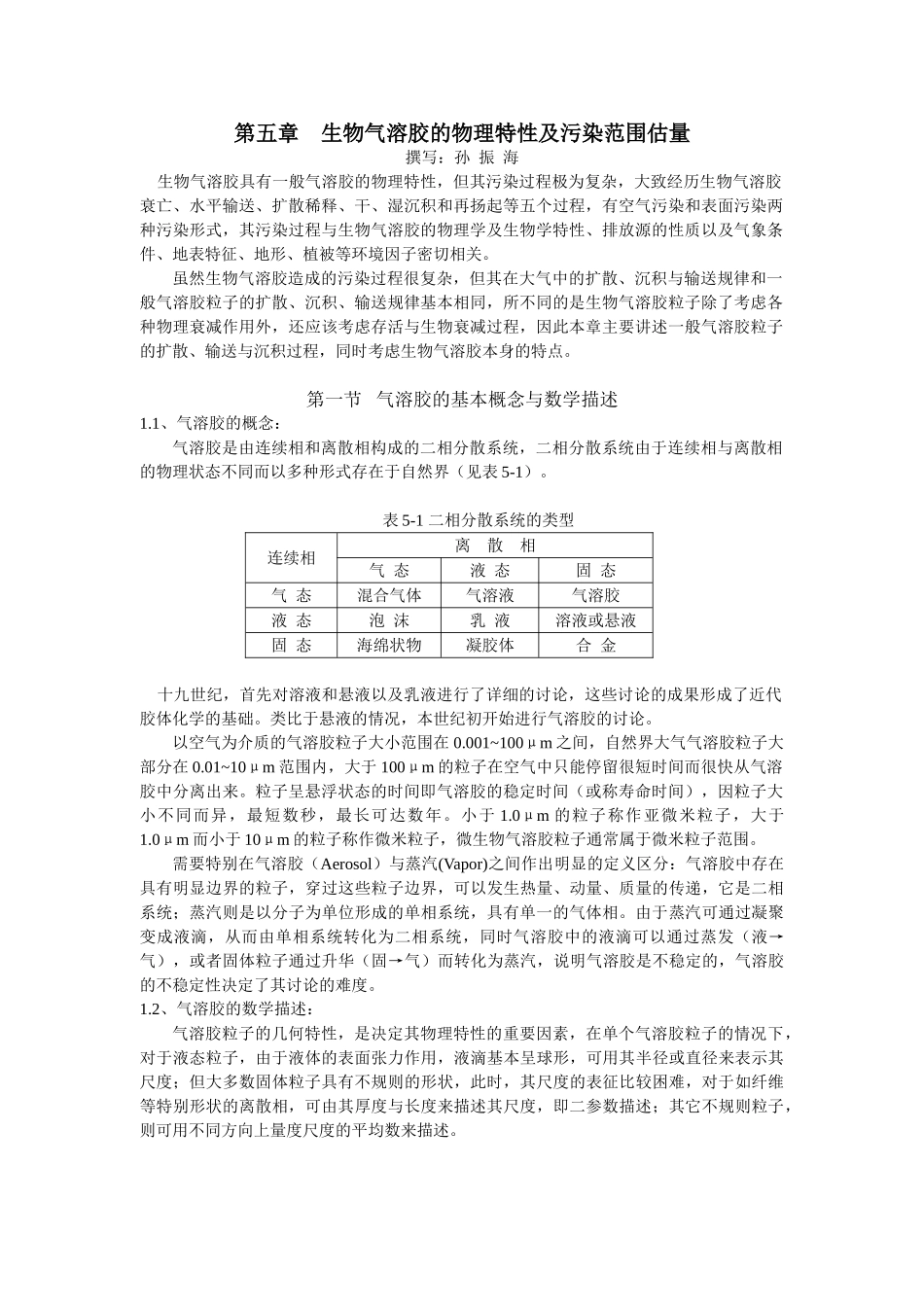第五章 生物气溶胶的物理特性及污染范围估量目 录1、 气溶胶的基本概念与数学描述1.1、气溶胶的概念1.2、气溶胶的数学描述2、 气溶胶物理特性简述2.1、单个气溶胶粒子的力学问题2.2、气溶胶粒子群的动力学问题3、 气溶胶粒子在大气中的扩散3.1、扩散与气象条件的关系3.2、污染物浓度估算方法3.3、扩散参数估量3.4、高斯模式的几点改进3.5、微生物气溶胶的扩散4、 沉积对污染物浓度的影响4.1、干沉积过程的影响4.2、降水清洗过程的影响5、 其它大气扩散模式简介5.1、高斯模式及其变形模式5.2、统计模式5.3、大气扩散相似模式5.4、K 模式Table of Contents1.Basic concept and mathematical description of aerosol1.1Concept of aerosol1.2Mathematical description of aerosol2.Physical characters of aerosol 2.1Dynamical characters of single particle2.2Dynamical characters of aerosol3.Diffusion of aerosol3.1Relationship between meteorologic conditions and diffusion3.2Estimation methods of pollutant concentration 3.3Estimation of parameters3.4Developments of Gauss Model3.5Diffusion of bioaerosol4Effects of pollutant concentration distribution by deposition 4.1Effects of dry-deposition4.2Effects of wet-deposition5Simplified character of some diffusion models5.1Gauss model and some models deriving from Gauss model5.2Statistical Model5.3Similar theoretics Model5.4K Model第五章 生物气溶胶的物理特性及污染范围估量撰写:孙 振 海 生物气溶胶具有一般气溶胶的物理特性,但其污染过程极为复杂,大致经历生物气溶胶衰亡、水平输送、扩散稀释、干、湿沉积和再扬起等五个过程,有空气污染和表面污染两种污染形式,其污染过程与生物气溶胶的物理学及生物学特性、排放源的性质以及气象条件、地表特征、地形、植被等环境因子密切相关。虽然生物气溶胶造成的污染过程很复杂,但其在大气中的扩散、沉积与输送规律和一般气溶胶粒子的扩散、沉积、输送规律基本相同,所不同的是生物气溶胶粒子除了考虑各种物理衰减作用外,还应该考虑存活与生物衰减过程,因此本章主要讲述一般气溶胶粒子的扩散、输送与沉积过程,同时考虑生物气溶胶本身的特点。第一节 气溶胶的基本概念与数学描述1.1、气溶胶的概念:气溶胶是由连续...


